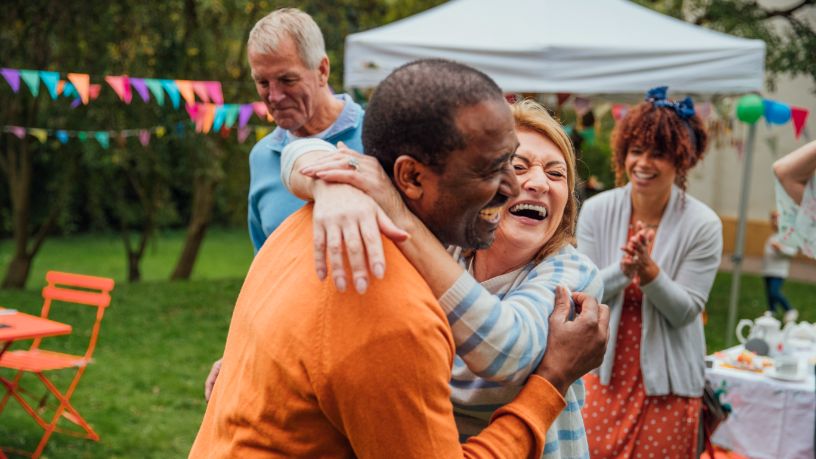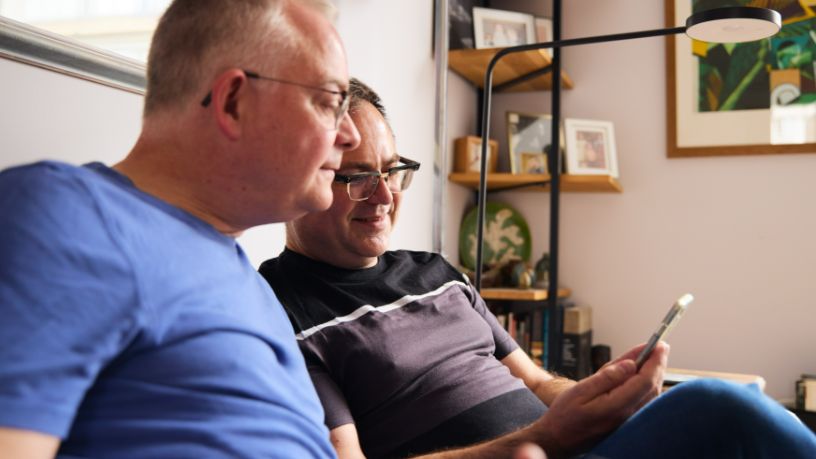Type 2 diabetes is the result of insulin resistance. Find out how it happens.
On this page
Key takeaways
There are certain modifiable and non-modifiable factors that put you at an increased risk of developing the condition.
Making certain changes can help you better manage or even prevent type 2 diabetes.
Many people live with type 2 diabetes for years with no symptoms, so discovering that you have the condition can be overwhelming.
But type 2 diabetes doesn’t have to turn your life upside down. And taking control of your condition can have a positive knock-on effect across your life.
Here, we look at the basics of type 2 diabetes, plus what it can look like to effectively manage the condition.
What is type 2 diabetes?
When you have type 2 diabetes, your body can’t properly regulate the amount of glucose (sugar) in your blood. The hormone insulin helps to regulate glucose levels. If your body doesn’t respond to insulin properly (insulin resistance), glucose can build up in your blood.
As a result, your pancreas produces more and more insulin to manage your blood glucose levels (BGLs). When your body can't produce enough insulin, your BGLs rise and diabetes develops.
There’s no cure for type 2 diabetes. However, research shows that, with certain lifestyle changes and medication, it is possible to go into remission or even stop or slow the progression of the condition.1
Monitoring your BGLs
To avoid symptoms and long-term health problems, it’s important to regularly monitor you BGLs when living with type 2 diabetes.
Thankfully, diabetes technology has made this easier than ever. There are numerous devices and methods to test and keep a record of your BGLs, which can help you and your treating team manage your condition.
Monitoring your BGLs can also help you understand how things like sickness, stress, diet and exercise affect you.
While everyone has their own unique BGL range, the general BGL target for adults with type 2 diabetes is:
- 4 to 7 mmol/L before meals
- less than 10 mmol/L after meals.2
Hyperglycaemia and hypoglycaemia
Hyperglycaemia occurs when your BGLs are too high, while hypoglycaemia occurs when they’re too low.
Over time, hyperglycaemia can lead to serious health issues, including damage to your nerves, blood vessels and other body organs.
Hypoglycaemia, on the other hand, tends to lead to more immediate health concerns, and may require you to act quickly to avoid serious health effects, including loss of consciousness and even death.
This might involve eating or drinking a fast-acting carbohydrate to bring your BGLs back to normal, then waiting 10 to 15 minutes before testing your BGLs.
Member Health Programs
Discover health cover that's right for you with a range of personalised programs and services designed to support your health and wellbeing.
Treating type 2 diabetes
Living with type 2 diabetes is something that’s unique to every person. However, certain lifestyle changes, and potentially medications, may significantly improve the way you manage the condition.
These include:
Diet
There’s no such thing as a ‘diabetes diet’ and, for the most part, living with type 2 diabetes should mean maintaining a healthy, consistent relationship with food and beverages like anyone else.
This means enjoying a diet that is low in saturated fat, sugar and salt, with a healthy balance of vegetables, fruit, protein, whole grains and dairy (or alternatives).3
You might also choose carbohydrates with a low ‘glycaemic index’ (GI), which prevent your BGLs from rising too quickly. Low-GI foods include things like legumes and wholegrains.
Exercise
Exercise can improve insulin sensitivity, help you control your BGLs and help you reach and maintain a healthy weight.4
As well as moving regularly throughout the day, adults should aim for either:
- 5 to 5 hours of moderate exercise a week
- 25 to 2.5 hours of intense exercise a week
- a combination of both.5
Weight loss
As well as improving your overall health and wellbeing, losing weight can be a great tool for managing type 2 diabetes.
In fact, research suggests that losing as little as 5 to 10% of your body weight can help improve your blood glucose management.6
What’s more, research shows that losing weigh can even help drive diabetes into remission.7
Smoking
If you have type 2 diabetes, you’re already at an increased risk of developing cardiovascular disease or circulatory problems. Meaning, smoking can even further increase your chances of developing these issues. Smoking can also increase your risk of developing type 2 diabetes in the first place.8
Alcohol
Many people living with type 2 diabetes can safely consume modest amounts of alcohol.
For healthy men and women, this should include no more than 4 standard drinks a day and no more than 10 drinks in any given week.9
If you take insulin or other diabetes medications, you may be at risk of alcohol-related hypoglycaemia. So, make sure you don’t drink on an empty stomach, and you eat food containing carbohydrates before and after drinking.
And, of course, always monitor your BGLs regularly, even if that’s between glasses of wine.
Medication
If you can’t manage your BGLs through lifestyle changes alone, your doctor may further recommend medication.
Insulin injections
If lifestyle changes and other medications can’t help to manage your BGLs by themselves, you may additionally need to take insulin.
Insulin can be supplied to your body via a syringe, insulin pen or insulin pump. There are different types of insulin that work in different ways.
Blood pressure and cholesterol
Living with type 2 diabetes also means managing your blood pressure and cholesterol.
High blood pressure and high cholesterol have been linked to cardiovascular disease, such as heart attack and stroke, and you're more at risk of developing these conditions if you have diabetes.10
The good news is that the positive steps you take towards a healthier lifestyle can also help you manage or avoid high blood pressure or high cholesterol. However, medication may also be required.
You should always talk to your diabetes treating team about any management options.
Mental health
It’s common to experience a range of feelings after a type 2 diabetes diagnosis, from shock and denial to fear and frustration.
These feelings are common and completely normal, and they don’t necessarily mean you have a mental health condition.
However, if you feel like you’re struggling with your mental health, talk to your doctor or diabetes health professional as soon as possible.
Having a better understanding of your condition may help you work through your anxiety and uncertainly around the diagnosis.
There is a range of diabetes support groups which meet regularly, both online and in person. There, you can find and share information, experiences and knowledge with people going through a similar experience.
Resources
Diabetes Australia offers resources on preventing and living with diabetes. Visit their website or call them on 1800 177 055.
The National Diabetes Services Scheme (NDSS) Peer Support is a space for people living through similar experiences to share their stories and support each other

At Bupa, trust is everything
Our health and wellbeing information is regularly reviewed and maintained by a team of healthcare experts, to ensure its relevancy and accuracy. Everyone's health journey is unique and health outcomes vary from person to person.
This content is not a replacement for personalised and specific medical, healthcare, or other professional advice. If you have concerns about your health, see your doctor or other health professional.
1Diabetes Australia. (2021). Type 2 diabetes remission: position statement. Diabetes Australia.
2Royal Australian College of General Practitioners. (2020). Management of type 2 diabetes: A handbook for general practice. Royal Australian College of General Practitioners.
3Better Health Channel. (2024). Healthy eating and diet. Victoria State Government, Department of Health.
4Diabetes Australia. (2024). Exercise & diabetes. Diabetes Australia.
5Australian Government, Department of Health and Aged Care. (2021). Physical activity and exercise guidelines for adults (18 to 64 years). Australian Government.
6Diabetes Victoria. (2023). Managing your weight. Diabetes Victoria.
7Diabetes Australia. (2021). Weight loss key to type 2 remission. Diabetes Australia.
8Diabetes Australia. (2021). Diabetes and smoking. Diabetes Australia.
9Diabetes Australia. (2019). Should I drink alcohol?. Diabetes Australia.
10Heart Foundation. (2024). Diabetes and heart disease. Heart Foundation.
You might also like...
What you shouldn't say to someone with type 2 diabetes
If your loved one has been diagnosed with type 2 diabetes, it can help to know what to say to them.
Diabetes 101: What are the different types?
Understanding the different types of diabetes is an important step in learning how to manage your health and preventing serious issues in the future.
7 diabetes snack swaps to conquer cravings
Living with diabetes shouldn’t mean sacrificing snacks. Discover 7 healthy and filling swaps that are just as good as the originals.
6 diabetes friendly desserts
Just because you have diabetes doesn’t mean you always have to skip the sweet treats. Discover 6 easy and delicious diabetes friendly desserts.





